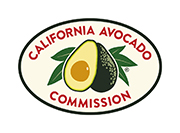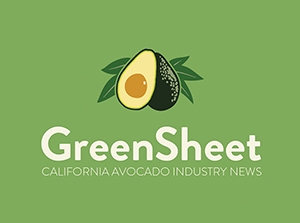Thrips and Wind Scarring on GEM Avocado Fruit – A Study on Two Locations in Ventura County Funded by the California Avocado Commission First Year Report
The objectives of this study are to determine if the scarring observed on young GEM avocado fruit is caused by wind or avocado thrips feeding and to determine if wind screens, insecticide applications, or organosilicon surfactants (e.g., Silwet®) can significantly reduce the scarring of young GEM avocado fruit.
Safety and efficacy of herbicides in bearing avocados
This study has provided critical, science-based information to the California Avocado Commission and herbicide registrants to pursue additional product labels. The objectives of this study were: 1. Determine the safety and efficacy of herbicides currently registered for citrus for use on bearing avocado. 2. Identify both pre and post emergent alternatives to glyphosate and simazine.
Avocado Phenology – Using Digital Monitoring to Improve Grove Management Decisions
California’s research information regarding cultural practices for avocados is growing. However, the majority of published research provides input for grove management decisions based on a calendar year and on growing conditions typical of the semi-arid subtropical conditions of Southern California. Anecdotally, the cooler, moister growing conditions of northern growing areas including San Luis Obispo County result in different phenological timing for major events like bloom, fruit set and shoot flush. This project will develop comparative phenological calendars, develop an interactive web-based mapping program to allow storage and retrieval of digital images that record growth stages, and expand digital methodology results.
Decision Support Tools For Management of Avocado Nutrition and Chloride Toxicity
In this research, we have modeled the relationships between leaf nutrient concentrations and the yields of avocado trees with the aim of developing decision support tools for improved fertilization and nutrient management to increase avocado fruit yields. Using a data base of ~3500 observations in which nutrient concentration profiles and yields of individual trees were examined over several harvest seasons, we now present in our final report a refined model that predicts nutrient-yield relationships based on all possible combinations for the 11 elements that are monitored by leaf analyses.
Avocado Breeding Program: meeting the production challenges in the 21st century
The overall research efforts for this proposed project is to maintain the plant material (scion and rootstock) that the UCR avocado breeding program currently has as well the personnel required to continue all the research and field activities related with the breeding program. This project will allow us to maintain the program and some of the activities related with the PRR and salinity rootstock screening until the full proposals are submitted to the California Avocado Commission on March 2015.
Utilization of marker assisted selection for the development of new varieties with high production
Traditional avocado breeding programs have been successful in producing new varieties with favorable characteristics. However, in practice, these breeding programs are a time consuming and a costly endeavor. The high cost of the breeding program is attributed to the fact that majority of the trees that are selected are eventually discarded after being maintained for 5-10 years. Therefore, approaches to identify favorable varieties at an early stage of tree development would significantly reduce the breeding costs and increase the number of favorable varieties produced by the breeding program. Marker-assisted selection is aimed at reducing the costs the breeding programs by using molecular markers that predict favorable traits. The ability to predict favorable traits will allow breeders to select for trees at the seedling stage.
- 1 of 4
- Load More


